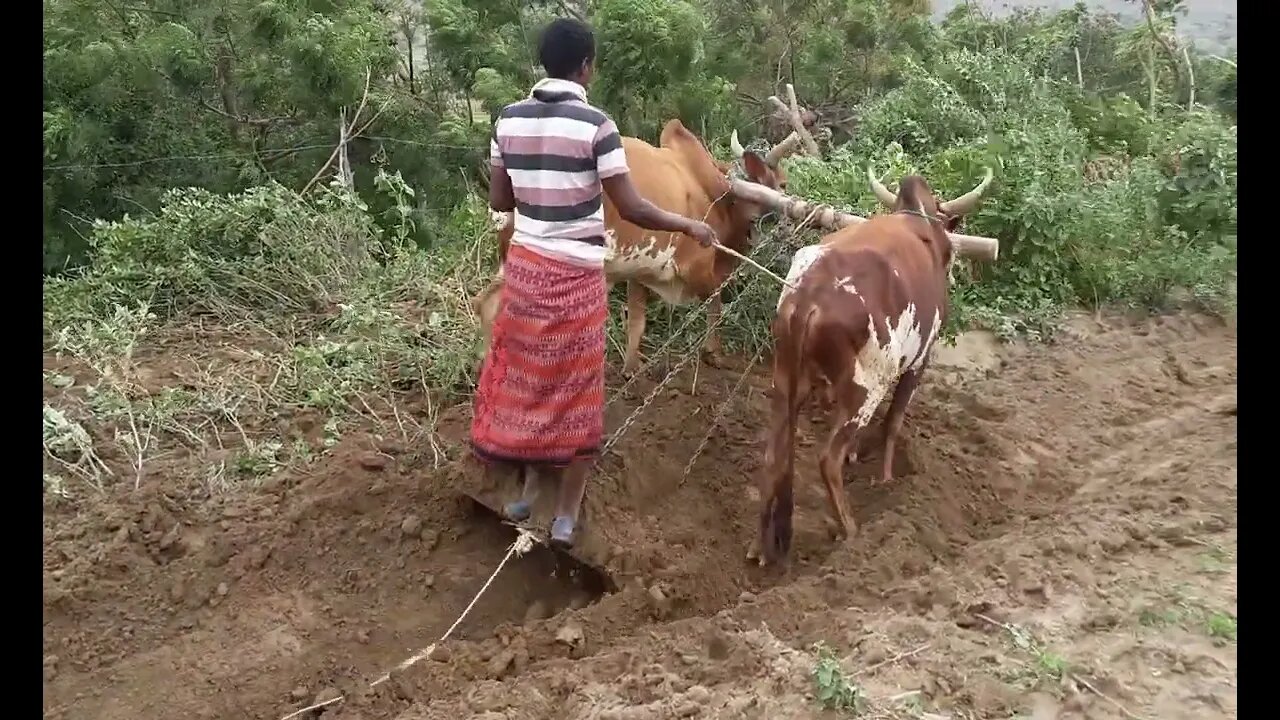Premium Only Content

#spate #oxen #excavation Traditional Oxen-Driven Canal Excavation for Spate Irrigation
In some areas of Ethiopia access to oxen is considered to be a more important production resource than land. The reasons for oxen's strong position there are related to the predominance of cereal cultivation, dry climate and heavy soils. In parts of Ethiopia there are more oxen than cows. Households with a pair of oxen are in general the richest households and those without oxen have to pay up to 50% of the harvest to have their land ploughed. Alternatives to ox ploughing, such as cow traction, hoe tillage or zero tillage, may develop in the future.
Spate irrigation is found in the Middle East, North Africa, West Asia, East Africa and parts of Latin America. In some countries it has a long history - more than 5000 years in Yemen, Pakistan and Iran. In the Horn of Africa spate irrigation is more recent with Eritrea and Sudan having the longest
experience and although it is officially recorded as being practised over the last 200 years, it is highly likely that it has been practised on much
longer. Particularly in Ethiopia and Eritrea spate irrigation is on the increase.
Farmers use ox to help them in ploughing fields. They keep plough on shoulders of oxen. Oxen pull them all over the fields. It makes the soil loose. After ploughing, soil is ready for sowing.
-
 2:26:28
2:26:28
megimu32
3 hours agoOTS: Board Games Gone Wild! The Loud, Weird & Chaotic Games That Raised Us
4.84K6 -
 LIVE
LIVE
DamnDanieI
3 hours agoKill First, Loot Later – OTG Live
292 watching -
 56:41
56:41
Donald Trump Jr.
7 hours agoLies, Leaks, and Lawfare: Censorship Corruption Exposed | TRIGGERED Ep.263
140K119 -
 1:19:46
1:19:46
Precision Rifle Network
5 hours agoS4E25 Guns & Grub - Rex Is Back, I shot the 6.5PRC finally...
11.6K1 -
 LIVE
LIVE
rhywyn
2 hours agoうつ
27 watching -
 LIVE
LIVE
RyuMuramasa✧
4 hours agoNEW Everdark Sovereign | Elden Ring Nightreign | LIVE Playthrough
36 watching -
 1:17:04
1:17:04
Nikko Ortiz
11 hours agoLive - News, Politics, Podcast And Naaah Im Playin We Chillen
3.3K -
 1:26:13
1:26:13
Mally_Mouse
6 hours agoLet's Hang!! -- P.O. Box & Chill!
16.2K -
 1:02:37
1:02:37
BonginoReport
7 hours agoKamala Teases Book About Dumpster Fire Campaign - Nightly Scroll w/ Hayley Caronia (Ep.102)
68.9K56 -
 35:05
35:05
Stephen Gardner
6 hours ago🔥Obama will be FORCED to Testify in Trump trial?
31K50